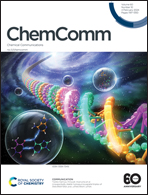Quantum stereodynamics of cold molecular collisions
Abstract
Advances in quantum state preparations combined with molecular cooling and trapping technologies have enabled unprecedented control of molecular collision dynamics. This progress, achieved over the last two decades, has dramatically improved our understanding of molecular phenomena in the extreme quantum regime characterized by translational temperatures well below a kelvin. In this regime, collision outcomes are dominated by isolated partial waves, quantum threshold and quantum statistics effects, tiny energy splitting at the spin and hyperfine levels, and long-range forces. Collision outcomes are influenced not only by the quantum state preparation of the initial molecular states but also by the polarization of their rotational angular momentum, i.e., stereodynamics of molecular collisions. The Stark-induced adiabatic Raman passage technique developed in the last several years has become a versatile tool to study the stereodynamics of light molecular collisions in which alignment of the molecular bond axis relative to initial collision velocity can be fully controlled. Landmark experiments reported by Zare and coworkers have motivated new theoretical developments, including formalisms to describe four-vector correlations in molecular collisions that are revealed by the experiments. In this Feature article, we provide an overview of recent theoretical developments for the description of stereodynamics of cold molecular collisions and their implications to cold controlled chemistry.

- This article is part of the themed collection: 2023 CRSI Medal Winners Collection


 Please wait while we load your content...
Please wait while we load your content...
